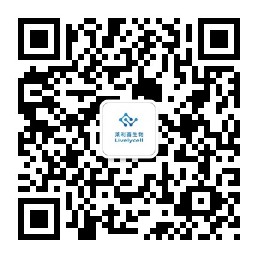暨不大干细胞
Introduction:

Stem cells are the undifferentiated cells found in the human body that have the ability to differentiate into any type of cell. This ability has made stem cells an indispensable tool for medical research and treatment. However, the use of embryonic stem cells for research purposes has been marred by ethical concerns. As an alternative to embryonic stem cells, induced pluripotent stem cells (iPSCs) and adult stem cells are some of the alternative sources of stem cells. One such type of adult stem cell is the "adipose-derived" or the "adipose tissue-derived" stem cell, also known as the "Adipose-derived stem cell" (ASC), which is commonly referred to as "Jibei (暨北) stem cells" or "Jibi (暨闭) stem cells" in China.
The Origin of Jibei Stem Cells:
Jibei stem cells were first discovered by a team of American scientists led by Zuk in 2001. These cells were extracted from adipose tissues in adults, which led to their name - adipose-derived stem cells (ASC). Zuks team discovered that these stem cells have the ability to differentiate into several cell types, including bone cells, cartilage cells, muscle cells, and fat cells.
Research on Jibei Stem Cells:
In China, Jibei stem cells have become popular due to their easy accessibility, abundance, low immunogenicity, and low invasiveness. Researchers in China have explored various therapeutic applications of Jibei stem cells. Jibei stem cells have been shown to enhance wound healing, treating skin burns, promoting angiogenesis in ischemic tissues, and repairing myocardial infarction-damaged tissues. Jibei stem cells have also been demonstrated to prevent liver fibrosis, osteoporosis, and autoimmune disorders.
Advantages of Jibei Stem Cells:
Jibei stem cells have several advantages over other types of stem cells:
- Abundance: Jibei stem cells are abundant in the human body, with an average of 100,000 stem cells per gram of adipose tissue.
- Ease of Access: Jibei stem cells can be easily obtained through liposuction or other non-invasive procedures to extract adipose tissue.
- Low Immunogenicity: The use of Jibei stem cells is less likely to trigger an immune response than other types of stem cells, such as embryonic stem cells.
- Low Invasiveness: The procedures used to extract Jibei stem cells are generally less invasive than those used to obtain other types of stem cells.
Challenges associated with Jibei Stem Cells:
Although Jibei stem cells have many advantages, researchers still face many challenges in their application. One of the significant challenges is the lack of standardization of the culture methods to expand Jibei stem cells since the differentiation capacity and viability of the cells decline rapidly upon long-term cultivation. Another challenge is the use of animal products in cell culture, which can lead to contamination and may affect the quality of stem cells. Also, there have been concerns about the potential risk of tumorigenesis and teratoma formation. To address these issues, researchers are continually investigating new ways to improve the isolation and expansion of Jibei stem cells while lowering the risks associated with their use.
Conclusion:
Jibei stem cells have shown great promise in regenerative medicine due to their abundance, ease of access, low immunogenicity, and low invasiveness. Multiple studies in China have shown that Jibei stem cells can be used to regenerate tissues, prevent fibrosis, fight autoimmune disorders, among other applications. However, their application still faces several challenges, such as standardization of the culture methods, contamination, and the risk of teratoma formation. Researchers continue to explore ways to improve the isolation and expansion of Jibei stem cells while addressing these challenges.
- 细胞储存记录填写指南
- 探索常州白泽:细胞储存机构指南
- 深圳华大干细胞储存:开启生命健康新篇章
- 渭南干细胞储存:全面解读费用详情
- 红细胞储存的理想温度
- 核酸在细胞中的储存
- 太保细胞储存计划:打造健康未来的明智选择
- 细胞储存中的血小板和红细胞储存
- 干细胞储存:解锁未来健康的投资指南
- 细胞储存类型全览:了解您的选择
干细胞最热文章
- 最近发表














